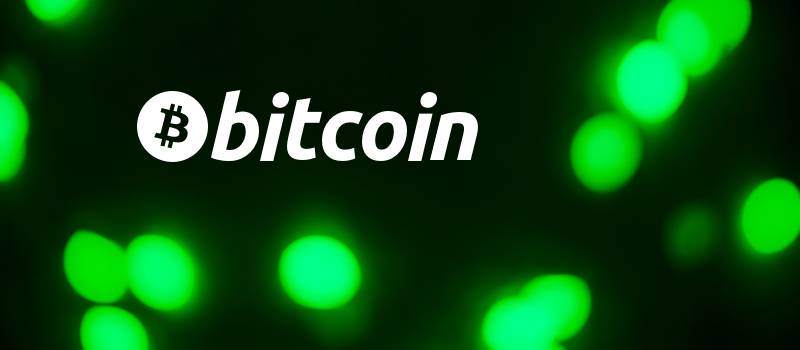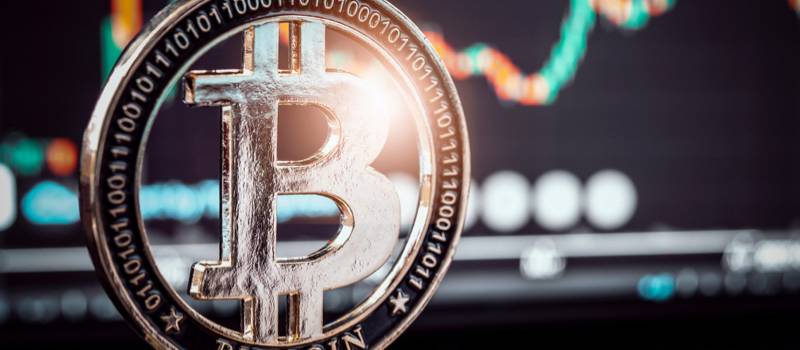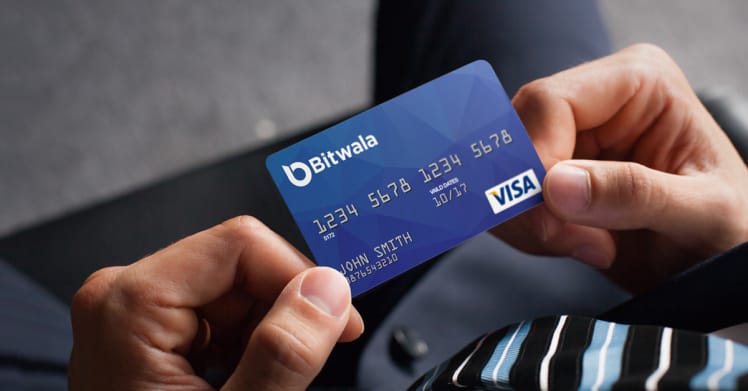The crypto industry has had one of its best years as it began to see widespread adoption from both retail and institutional investors. This has had a positive effect on the value of digital assets like Bitcoin and Ethereum, and the sheer market cap of these assets indicates the extent of the growth the space has seen. In fact, Ethereum’s market cap is now higher than the largest bank in the world – according to available data, Ethereum’s market cap has now risen above even that of JPMorgan. Kris Kay, a twitter user, first pointed this out on December 1 via a tweet which showed that Ethereum’s market cap was $550 billion. Per his tweet, the growth of the space is an indication of how far the coin has come in recent times. To put this in context, Ethereum has been in existence for less than a decade while the largest bank in the world, JPMorgan, has been in existence for the best part of the last 40 years.
At the beginning of last week, Ethereum’s market cap stood at around $480 billion even after falling almost 5%, and despite this, it is still among the top 15 assets by market cap in the world, ranking right alongside of Facebook’s Meta, Tesla, Amazon, Bitcoin, Apple, and Microsoft. Ethereum’s blockchain is undoubtedly one of the most popular and most used blockchains in the crypto space since it is the most preferred blockchain for Decentralized finance (DeFi) applications due to its smart contract features. Apart from this, the network also processes over 1 million daily transactions via its network, and this makes it one of the most used crypto networks. However, one slight drawback is that its growth is potentially being hampered by record-high transaction fees, which it has been combatting with the implementation of EIP-1559 along with a switch to becoming a proof of stake network.

Whale Purchases 99.9 Billion SHIB Coins Worth $3.7 Million
At the beginning of last week, a mysterious and unidentified Binance whale purchased quite a fancy number of Shiba Inu tokens. The BNB whale picked up an alluring 99,999,999,999 SHIB tokens worth a staggering $3.7 Million. This constitute 99.9 billion Shiba Inu tokens, and in English, the number is written as ninety-nine billion, nine hundred and ninety-nine million, nine hundred and ninety-nine thousand, nine hundred and ninety-nine coins. Whales have recently become rather extravagant when it comes to Shiba Inu, and due to this, they are standing apart from the rest of the whale crowd. On last Tuesday, WhaleStats tweeted, “A BNB whale just bought 99,999,999,999 $shib ($3,799,999 USD).” This particular Binance whale is ranked at the number 2 position in WhaleStats and also holds FTX, CELR, WRX, among others.
The identity of the whale remains a mystery and so it is not known if they were an individual, business, or a financial establishment. Shiba Inu has attracted whales since the last week of July and this trend has not stopped yet. During October and November, whales dominated SHIB, taking entry positions in the meme-token almost every two days. One particular whale named Gimli jumped in on the Shiba Inu bandwagon by buying the token endless times. The Gimli whale now holds a whopping 1.3 trillion Shiba Inu coins worth a staggering $50.1 million. Gimli has a unique relationship with Shiba Inu and has purchased it at every opportunity and is among the few in the market who have picked up SHIB both during its lows and highs. On December 1, 2021, Gimli had purchased 49.9 billion SHIB coins worth $2.4 million. Also, on December 3, Gimli picked up 28 billion SHIB coins worth $1.1 million. On December 7, Gimli brought 54 billion SHIB tokens worth $2.7 million again.
Whales are making inroads into SHIB because they believe it is now at a pivotal point and its price could propel much higher. The announcement of an upcoming project named ShibaNet has thrilled the community since it brings in use-case to the token. ShibaNet is a decentralized marketplace that allows users to buy, sell, and trade goods using the in-house Shiba Inu ecosystem. Shytoshi Kusama, the project lead of SHIB, spoke about ShibaNet in his Medium blog this past July. Entitling the blog ‘Shiba Inu Phase 2,’ he wrote, “A financial institution is only good as the consumers and businesses that utilize their financial instruments.” He had used this quote from Miyamoto Musashi at the start of his blog: “You must understand that there is more than one path to the top of the mountain.” And just when you might be thinking that this maybe a one off, wait! There’s more ….

Another Whale Buys 3.2 trillion Coins Worth $125 Million In Three Different Transactions
An even bigger Shiba Inu whale was born again last Wednesday. The mysterious and unidentified whale purchased more than 3.2 trillion SHIB coins worth a staggering $125 million. Identified only as an ETH whale, this purchase of SHIB came in three different transactions. This is, by far, the biggest whale transaction Shiba Inu has witnessed thus far in December, and it could be, this is just the beginning. WhaleStats was the first to disclose the enormous transactions and they tweeted all three transaction details and links. One of their tweets went like this: “Woof! Woof! New #SHIB whale was born!!! Holds 3,243,484,849,528 $SHIB ($120,342,829 USD) Transactions: Welcome to the #ShibaArmy Family!” They also included a cheerful dance GIF. Once again, the identity of the whale remained a mystery. Judging by the mammoth amount spent to buy 3.2 trillion tokens, more than likely, the notion of an individual whale can be ruled out.
Whales have dominated SHIB since the last week of July and the trend hasn’t stopped yet. There is news of a new Shiba Inu whale buying tokens almost every two days. SHIB is one of the most sought-after tokens among the top 1000 ETH whales and the community is growing steadily. During the middle of last week, a Binance whale purchased 99.9 billion SHIB coins worth $3.7 million. Also, Gimli whale has been buying SHIB regularly and now holds 1.3 trillion coins worth a whopping $50.1 million. Gimli is ranked at number 20 in WhaleStats after going all-in on SHIB. There is definitely no dearth of whale movements in SHIB, and the large transactions are only increasing day-to-day. Gimli also holds Ethereum, Hi, MANA, Fantom, SAND, Matic and Enjin. More good news for the Shiba believers: Shiba Inu announced a gaming partnership with Playside Games in a strategic work-for-hire contract. Users will now be able to access the built-in game at any place of their choice and convenience. PlaySide will provide production, design, engineering, art, user interface, and experience development services to Shiba Inu Games. SHIB has now begun venturing out to gain real world use-case with their in-built gaming platforms so that now, users can buy, sell, and transact using the in-built app that features the game along with various other things.

Despite Red Bitcoin, On-Chain Signals Flip Green
Bitcoin on-chain signals have remained green despite the past few red weeks. Bitcoin’s price had taken a plunge towards $40K, which had brought a lot of losses as billions of dollars in long positions were liquidated on December 4th in one of the sharpest declines of the year. This had mostly brought down a number of metrics associated with the asset; however, on-chain signals remain resistant. On-chain data ranging from miner revenues, transaction fees, hash rates, and daily transaction volumes have all shown positive trends for Bitcoin. None of these have thus far been affected by the price decline. In fact, BTC’s hash rate is continuing its recovery trend ever since it had taken a hit with China’s crackdown on mining which took place earlier in the year. China had gone from providing about 70% of the mining power to almost zero in a matter of weeks, and this had left BTC’s hash rate to suffer greatly. This situation has since been rectified as Bitcoin miners have found new locations to resume their mining activities.
Since China banned mining, BTC’s hash rate has been gradually picking back up, and in the past week, it saw a significant increase. Now, it is up for the past seven days after the first difficulty reduction following ten difficulty adjustments. As the difficulty has dropped, the profitability of mining activities has increased. Due to this, more miners have gotten back into the game and have set up their mining rigs once more. Arcane Research reported that the increased hash rate has led to an increase in block production rate. It seems that as more miners come back on board, an average of 6.46 blocks have been created each hour in the past week, which represents a significant increase of eleven percent. Bitcoin transactions fees have remained low through the past few weeks of declining prices, but there was an established increase in fees in the past seven days, which led to, on average, transaction fees growing by 33%.
Average transaction value also jumped in the past week. As investors rushed to sell their holdings during the crash, the average transaction volume climbed by 8.3%. This was mostly due to holders with larger volumes moving their BTC to exchanges in order to sell, increasing average transaction volume, but also transaction fees at the same time.

Indian Prime Minister To Make The Final Call Concerning Crypto Regulation In India
Prime minister Narendra Modi will be making the final decision regarding cryptocurrency regulation in India. According to multiple reports, the crypto bill has been finalized by India’s Finance Ministry, but certain sections of the bill require detailed discussions, after which, the final decision will be put forward by PM Modi. A high-level meeting chaired by leading government officials last Thursday negotiated various prospects of the cryptocurrency bill amidst conflicting views. The meeting prompted government officials to discuss conflicting cryptocurrency options at length, keeping in mind the concerns voiced by the Reserve Bank of India. The options discussed in the meeting included imposing a complete ban on crypto activities in India; a partial ban; allowing all categories of crypto products with regulation; or just selecting a few with regulation. As per multiple reports, the discussion was said to continue before a final framework regulating cryptocurrencies would be introduced in the Indian Parliament.
The proposed crypto bill also includes a provision to launch a government backed CBDC, which would be a digital currency that would be issued by the Reserve Bank of India. The discussions are likely to weigh the associated advantages and drawbacks concerned with crypto trading in India after which “PM Modi will take the final call.” Certain segments of the bill will require comprehensive dialogue in order to discuss the broad framework on how cryptocurrencies will function in India. Any additional clauses will be added once the deliberations have been made and ascertained. The bill was slated to be introduced in the last budget session but was delayed as the government decided to modify certain sections of the proposed draft. Finance Minister Nirmala Sithraman had stated that the bill would first be approved by the Union Cabinet before being introduced in the parliament.

Bitcoin Price Doesn’t Matter: Adoption Does
These are highlights from a guest post by Carlos Massiah to Bitcoin Magazine. Opinions expressed are entirely his own.
Bitcoin: a new and complex technology that almost nobody is able to explain to you. Yet people always talk about Bitcoin; however, they don’t focus on the technology, but rather on the price. The Bitcoin price swings are often used by both supporters and detractors to proclaim Bitcoin’s success or impending failure. For instance, there are outlandish predictions claiming price predictions of up to $1 billion per Bitcoin, as well as articles claiming the end of Bitcoin: “Cryptocurrencies are about to become worthless – and this is what will happen when they crash” – independent opinion. Bitcoin appears to have died as many as 431 times at the time of writing. Doom predictions are often accompanied with the idea that Bitcoin is a Ponzi scheme, as well as that it is useless. Unfortunately, these types of claims represent the vast majority of articles found online. As a result, it is not surprising that the average person has a similar opinion, considering that this is virtually all the news talks about.
Today we decided to talk about something else … usage and adoption. Let’s first focus on Bitcoin the protocol (rather than the virtual coin) and let’s list a few use cases: Financial inclusion. Provide financial services for people without banks; (Relatively!) Stable alternative currency for people in “inflation nations;” Accessible cheap remittance (money transferred from abroad to a home country). Micro-transactions: Pay per article (news, blogs, etc.); Online arcade games; Machine-to-machine payments. This is not an exhaustive list, but only a few use- case examples. While remittance usage is just a cheaper alternative of existing money transfer methods, machine-to-machine payments opens up a whole new industry. As people have begun to explore these areas, Bitcoin usage has grown exponentially with time. Indeed, millions of people are actually already using Bitcoin. How can we be sure? By using metrics. For a network perspective of users, we can look at “Unspent Transaction Outputs” (UTXOs). These are coins that people own and that can be spent now.
Today there are about 76 million UTXOs, a far larger amount compared to the amount in 2011. This gives us an indicator for the growth in usage as Bitcoin as an asset over the last 10 years. Next, we can have a look at block space usage: the amount of data committed to the blockchain per block has increased over the course of the last 10 years, showing an increase in the number of data commitments (“transactions”) made and the amount of data committed. This is an indicator of the usage of the network itself. This metric will stop changing so rapidly now, as the block limit has been reached. Transactions are still increasing at a fast pace through scaling solutions like Lightning, Liquid, and Rootstock. The Lightning Network is a second layer to Bitcoin; it processes transactions instantly for low fees by using a technology called payment channels. Lightning usage has started to grow exponentially in recent months. The technology has reached a level of maturity where it is user-friendly for consumers. Due to how Lightning works, we can’t see how many transactions are made on that network, we can only observe the capacity. The people of El Salvador make use of the Lightning Network for payments, as Bitcoin is legal tender there.
More people own Bitcoin, either on Bitcoin’s ledger or an exchange’s ledger; and more people are making data commitments (“transactions”) on the Bitcoin ledger. Bitcoin social networks have also grown over the past 10 years. Alongside this, the general public’s awareness of Bitcoin has grown too. Most people have heard of Bitcoin and have a vague idea of what it is. Reddit has also grown in number of users; this is a reflection of the broader growth of Bitcoin communities and participation in Bitcoin projects. Twitter has recently added tipping, which allows anyone in the world to tip using BTC over Lightning. The U.K.’s Financial Conduct Authority consumer research has found that 78% of adults in the U.K. are aware of cryptocurrencies. This varies per country, but on the whole, most adults know of Bitcoin. Bitcoin ATMs can be found in 78 countries worldwide. We also see a pattern of rapid growth, doubling every year. The spread of ATMs reflects the integration of Bitcoin into people’s daily lives. ATMs are also a way for people working in foreign countries to send money home to family or receive money. ATMs are used for small purchases for regular individuals, not by traders who would rather use exchanges.
Many people use Bitcoin without an exchange however, or even without having a bank account. People can get access to Bitcoin by either getting it from friends and family, earning it, or using an ATM. Bitcoin Beach in El Zonte is an example of a circular Bitcoin economy where people earn and spend in Bitcoin, many of whom don’t have a traditional bank account. Peer-to-peer trading platforms like LocalBitcoins have high Bitcoin trading volumes in developing nations and in countries with distressed currencies. Adoption and usage metrics are telling us the story of whether Bitcoin is useful or not. So far, every year, more people have decided to use the Bitcoin protocol and the Bitcoin asset in their lives. Each of these metrics are showing a doubling in 1-2 years, or a growth rate of 50-100% per year. Taking the pessimistic estimate of 200 million users, and assuming a lower growth of 30% per year, we will see 2 billion users within 10 years. Realistically, reaching 2 billion users might happen much faster, given that we don’t know the true number of current users, nor the ultimate network effects from giants like PayPal, Visa, Amazon, and Google, etc.
The post <h5>Digital Asset Insights #45</h5> <h3>Ethereum’s Market Cap Is Now Beyond That of The Biggest Banks in The World</h3> appeared first on JP Fund Services.
Tradersdna is a leading digital and social media platform for traders and investors. Tradersdna offers premiere resources for trading and investing education, digital resources for personal finance, market analysis and free trading guides. More about TradersDNA Features: What Does It Take to Become an Aggressive Trader? | Everything You Need to Know About White Label Trading Software | Advantages of Automated Forex Trading












































